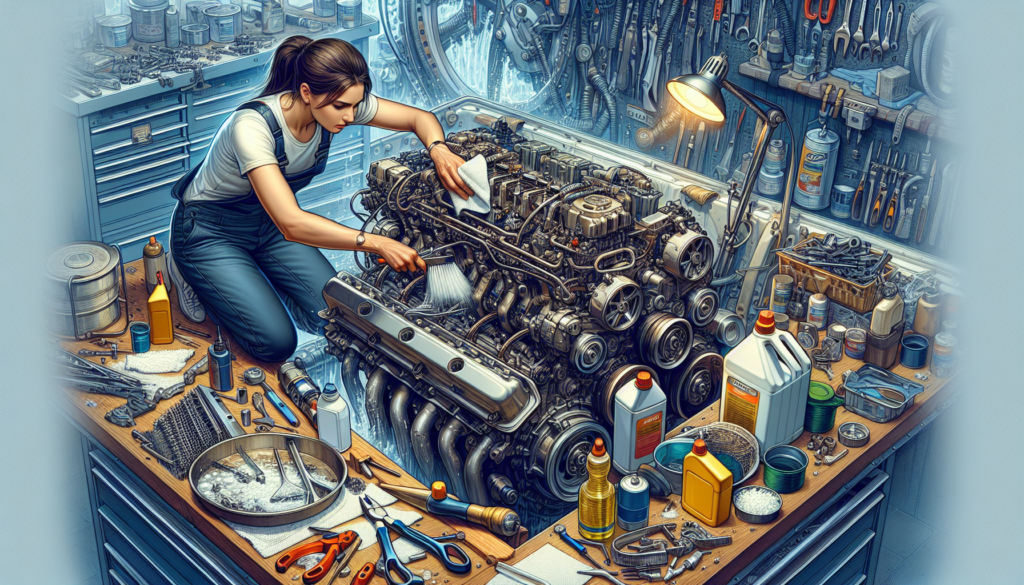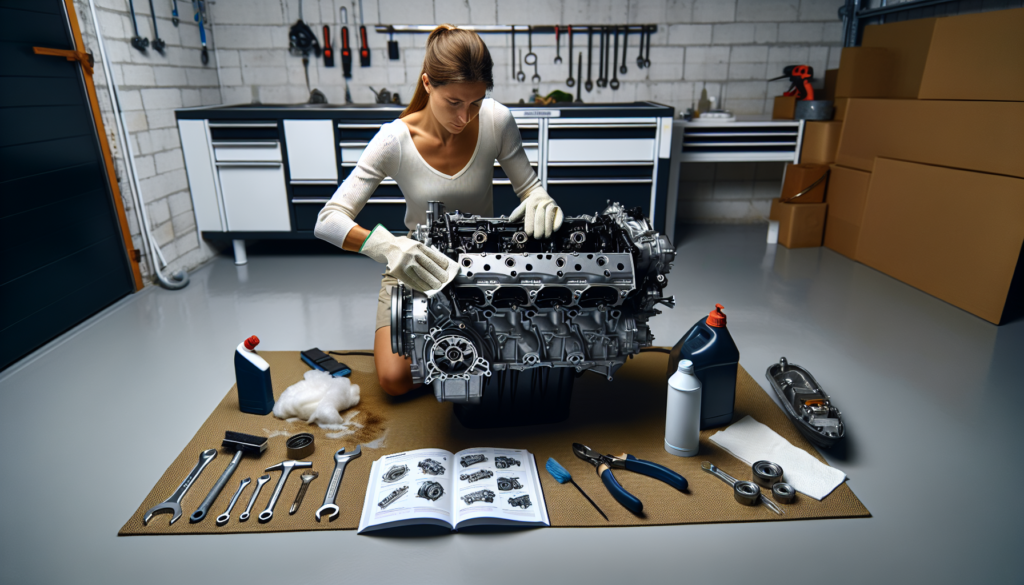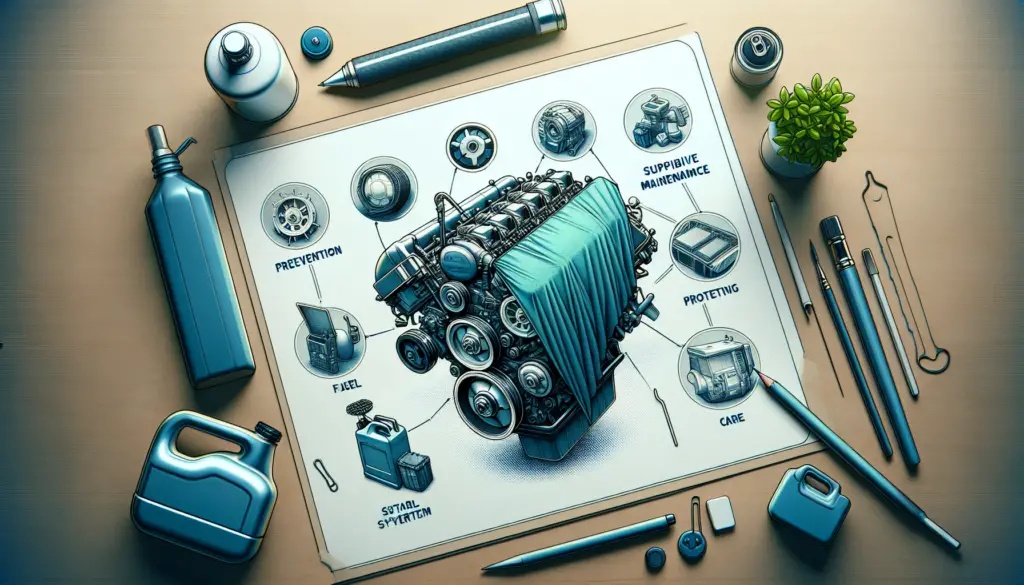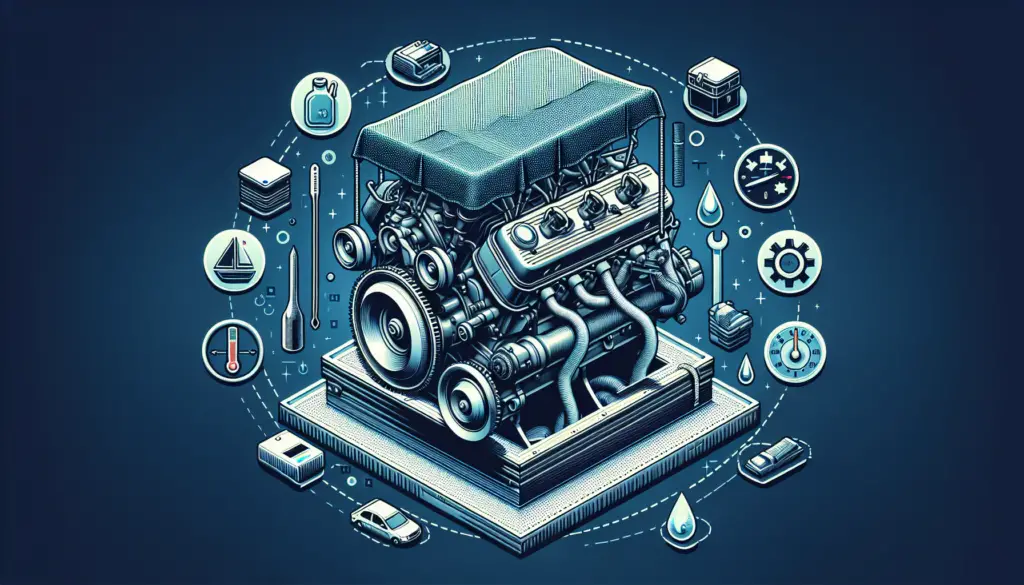You’re tied to your boat; it’s not just a vessel for water adventures, but a significant investment. An aspect new boat owners often overlook is engine care during downtime, especially proper storage—one misstep and you could be shelling out a fortune in repairs. In order to protect this asset, it’s essential to know the best ways to preserve your boat engine during storage. The longevity and performance reliability of your engine can be dramatically improved by following proper storage procedures. Read on to discover invaluable tips and actionable steps you can take today to ensure your boat engine stays in ship-shape.

Understanding the Importance of Proper Engine Storage
Proper storage of your engine is not just a recommendation, it’s an absolute necessity if you want your machine to perform at its best. It’s akin to giving your reliable workhorse a well-deserved rest, recharging its batteries (literally and metaphorically), and keeping it in good nick for the long haul.
Assessing the Long-Term Impact of Neglect
Ignoring the storage needs of your engine can have severe long-term effects. Just like your body would suffer if you didn’t take the time for proper rest, your engine, too, can show signs of wear and tear, fatigue, and failing performance. Even worse, an uncared for engine can die a premature death, and repair costs can burn a hole in your pocket.
Potential Damages from Improper Storage
If improperly stored, your engine is at risk from a myriad of predicaments such as rust, corrosion, buildup of dirt, condensation, and expensive damage to mechanical parts. The parts might stick together or the engine might fail to start altogether.
Choosing an Ideal Storage Location
Choosing a suitable place for your engine storage might seem trivial, but it’s a crucial decision that can make a world of difference.
Basics of an Adequate Storage Environment
An ideal storage location for your engine should be clean, dry and properly ventilated. Minimal exposure to harsh weather conditions, dust and dirt, and wide temperature fluctuations is a must. An adequate storage environment can very well be your first line of defense against potential damage.
Potential Risks of Inadequate Indoor and Outdoor Locations
Inadequate storage places, both indoor and outdoor are riddled with risks. Indoors, an overly humid or dusty environment can be detrimental to your engine. Outdoors, your engine is exposed to the elements – rain, snow, dirt, and wild temperature swings.
Cleaning and Degreasing the Engine
Maintaining cleanliness is an essential part of your engine’s storage regimen.
Why Cleaning is Essential Before Storage
Cleaning your engine removes harmful buildups like dirt, grease, and grime that might have settled over time. It helps prevent corrosion and keeps the engine parts functioning optimally.
Proper Process of Degreasing and Cleaning Your Motor
The process of cleaning your motor begins with using a high-quality degreaser that cuts through the grime. After applying the degreaser, rinse your engine with water, dry it thoroughly to prevent rust, and lube the necessary parts.
Draining All Fluids
Details on Why Draining Fluids is Crucial
Fluids such as oil, fuel, and coolant can turn stale over time and can cause damage to your engine’s internal components. Therefore, draining all fluids before you tuck your engine in for a long sleep is crucial.
Instructions on How to Drain Various Types of Fluids
Though the process of draining fluids depends on the type of engine you have, the basic process includes running your engine a bit to warm up the fluids, turning off the engine, removing the plugs, and allowing the fluids to drain into appropriate containers.

Applying Antifreeze for Cold-Weather Storage
The Importance of Applying Antifreeze
Antifreeze is essential during cold weather storage to prevent the freezing of any residual water in your engine, which could lead to cracking or other damage.
Steps to Effectively Apply Antifreeze
The process of applying antifreeze includes draining the coolant, adding the antifreeze, and running your engine for a few minutes to distribute the antifreeze evenly.
Use of Fogging Oil
Role of Fogging Oil in Engine Protection
Fogging oil is used to provide a protective layer on the internal components of your engine. It helps in reducing friction, preventing rust, and moisture damage.
Correct Way of Using Fogging Oil
To use fogging oil, spray it into the air intake of your engine while it’s running. This allows the oil to reach and protect all internal components.

Fuel Stabilization
Defining the Concept and Purpose of Fuel Stabilization
fuel stabilization involves using fuel stabilizers to prevent fuel from degrading during storage, which could lead to gumming or varnishing of your engine components.
Methods for Achieving Stabilization
Add a quality fuel stabilizer to your fuel tank, run your engine for a few minutes to allow distribution throughout the system, and then store the engine.
Disconnecting and Charging the Battery
Explanation of Why Battery Disconnection is Essential
Disconnecting the battery can prevent any parasitic draw that might slowly drain it over time. The last thing you want is a lifeless battery when you need your engine to roar back to life.
How to Preserve Battery Life During Storage
Disconnect your battery, clean its terminals, apply terminal protectant, and store it in a cool, dry place. Also, consider using a battery maintainer to keep it charged.

Engine Humidification Control
Understanding Humidity’s Impact on Your Engine
Humidity can be an engine’s silent enemy. It promotes rust and corrosion and can deteriorate your engine’s performance over time.
Ways to Control and Maintain Optimal Humidity Levels
Use dehumidifiers, silica gel packs, or moisture-absorbing products to control humidity in your engine’s storage area. Regular checks to ensure optimal humidity levels are maintained is also advisable.
Regular Check and Maintenance During Storage
Benefits of Periodic Inspections
Regular inspections allow you to detect any problems early on and take corrective measures, preventing potential major damage.
Key Maintenance Tasks to Perform During Storage Period
Turn the engine over periodically to prevent parts from sticking, check for signs of rodent infestation, and inspect for rust or any other damage. Maintain the fluid levels and battery charge as needed.
In short, with the right knowledge, tools, and care, your engine can stay in excellent condition even during long-term storage. Give it the care it deserves, and it will serve you reliably for many years to come.


